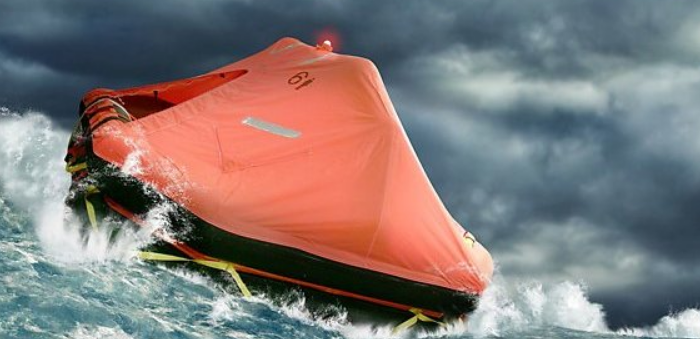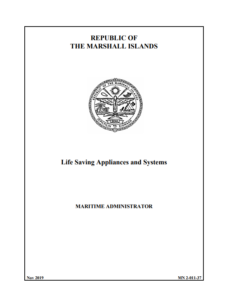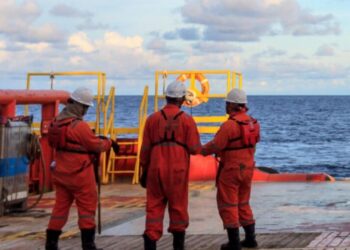The Republic of Marshall Islands issued clarifications to the maritime industry on how vessel owners and operators may comply with amendments to SOLAS Chapter III, Regulation 3 and 20, regarding life-saving appliances, that will enter into force from 1st January 2020.
Amendments on life saving appliances were adopted during the 96th session of IMO’s Maritime Safety Committee (MSC 96) in May 2016, adding specific examinations and tests required for each type of equipment.
The RMI Marine Notice 2-011-37 applies beginning 1 January 2020 to:
- all ships and mobile offshore units (MOUs) subject to SOLAS; and
- Commercial Yachts and Yachts Engaged in Trade of 500 GT or more, Passenger Yachts and Private Yachts Limited Charter as regulated under the RMI Yacht Code (MI-103).
Requirements
- Survival Craft Stowage
Survival craft must be stowed according to SOLAS Regulation III/13. This includes “in a state of continuous readiness so that two crew members can carry out preparations for embarkation and launching in less than 5 min.”
- Lifesaving Appliance Falls
-Falls
As required by SOLAS III/20.4, falls used for launching lifesavings appliances must be inspected periodically with special regard for areas passing through sheaves. Deteriorating falls must be renewed as necessary or at intervals of not more than five (5) years, whichever is the earlier. The intermediate turning of the falls end for end is not required.
-Wire rope terminations
All primary load-bearing wire rope terminations must be formed by wedge sockets, class-approved resin or white metal sockets, swaged or spelter fittings or other suitable alternative method approved by Class. This includes falls for lifeboats, rescue boats and davit-launched life rafts as well as hanging-off pendants and recovery strops.
-Wire rope grips
Wire rope grips, such as bulldog grips, are not acceptable for any primary load-bearing terminations. Where wire rope grips are found to have been used on primary load-bearing terminations, arrangements must be made for their replacement.
- Lifeboats
-On-Load Release Hooks
Ships must be fitted with LSA Code-compliant lifeboat on-load release mechanisms as required by SOLAS III/1.5, taking into consideration MSC.1/Circ. 1392 and Corr.1.
When applying LSA Code paragraph 4.4.7.6 on fitting release mechanisms, MSC.1/Circ.1419 must be considered.
When selecting new or replacement lifeboat on-load release hooks, the Administrator advises ship owners or operators to select designs incorporating a permanent secondary safety system. Where a new or replacement lifeboat onload release hook incorporating a permanent secondary safety system cannot be obtained, ship owners/operators may select fail safe and innovative hook designs with characteristics that ensure the system cannot be released unintentionally or by the force of gravity. Where fall preventer devices are used, they must be done so in accordance with MSC.1/Circ. 1392 and Corr.1. See paragraph 6 of this Circular in particular.
Ship’s Masters must ensure that when a lifeboat on-load release hook with a secondary safety system is fitted, this is used during all drills (both launch and recovery) and when the lifeboat has crew or other personnel aboard. After the drill finishes, the secondary safety system must be removed or disengaged.
-Air Cylinders
Lifeboat air cylinder inspection and maintenance must be performed according to RMI Marine Notice 2-011-14. Air cylinders in totally-enclosed lifeboats must undergo maintenance and inspection following the requirements for Self-Contained Breathing Apparatus cylinders in that Notice, where applicable.
-Lifeboats with Independent Propulsion Systems
The unified interpretation provided in MSC.1/Circ.1597 must be considered when applying LSA Code paragraph 4.4.8.1 to lifeboats equipped with two independent propulsion systems.
-Lifeboat Damage
When any lifeboat is damaged, declared unseaworthy, or needs repair and if no replacement boat is readily available, life raft(s) capacity for all the persons onboard may be substituted as a temporary measure. This substitution may only take place with the Administrator’s approval. The minimum survival craft capacity
prescribed by SOLAS Chapter III must be maintained.
Where the defective boat is a motorboat and there is no other motor lifeboat on board, the total survival craft capacity provided must include a powered rescue boat meeting the SOLAS III/31.2 requirements.
These temporary measures will be limited to the minimum time required for replacement. In general, this will not exceed three (3) months.
-Equipment Dispensations
Lifeboat equipment dispensations under LSA Code paragraph 4.4.8.32 will be handled on a case-by-case basis. The exception is MOUs which will be handled as follows:
MOUs will be considered by the Administrator to be engaged on a voyage that permits the food rations (LSA Code, paragraph 4.4.8.12) and fishing tackle (LSA Code paragraph 4.4.8.26) to be dispensed with, provided that they are on station and are served by a standby vessel; or on station and located within 25 kilometers (16 miles) of another manned platform, MOU, or a harbor of safe refuge.
- Rescue Boats
SOLAS and the LSA Code do not require boats used solely for rescue to be fitted with on-load release mechanisms; however, many are fitted with these devices. The Administrator believes all on-load release mechanisms should meet the same standards, regardless of whether installed on a life boat or rescue boat.
Accordingly, the Administrator requires all on-load release mechanisms to comply with LSA Code 4.4.7.6 and to be evaluated according to IMO MSC.1/Circ. 1392 and Corr.1.
- Life Rafts
-Stowage and Accessibility
Life rafts provided under SOLAS Regulation III/31.1.4 may be stowed in protected positions, provided they are always readily available. Care must be given to their accessibility when deck cargoes are carried.
-Unified Interpretation
IMO Circular MSC.1/Circ.1490/Rev.1 must be applied to life rafts required by SOLAS Regulation III/31.1.4. This unified interpretation covers:
- stowage arrangements;
- embarkation and embarkation ladders;
- illumination; and
- lifejackets and immersion suits.
-Crew Carrying Life Rafts
Where the life raft embarkation and stowage positions are on different decks, the life raft must not be carried by crew negotiating a stairway. Such life rafts must be launched from the stowage deck using the painter to connect it to the relevant deck’s embarkation ladder.
Explore more herebelow:




































































research about improvement of life saving applainces